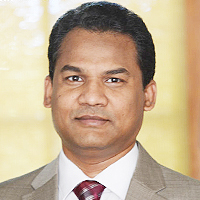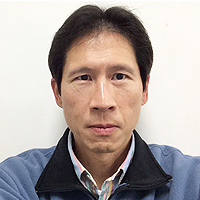Atypical cutaneous relapse of multiple myeloma
Published on: 21st July, 2021
OCLC Number/Unique Identifier: 9150239751
A 66-year-old patient, diagnosed κ light chains MM with t(11;14), presented before second cycle with bendamustine-dexamethasone. A complete remission was initially obtained with bortezomib-cyclophosphamide-dexamethasone and autologous HSCT. After relapse, he was successively treated with bortezomib-dexamethasone, carfilzomib-dexamethasone, daratumumab-dexamethasone and benda-mustine-dexamethasone.
Immune-mediated neuropathy related to bortezomib in a patient with multiple myeloma
Published on: 3rd January, 2022
Treatment options in multiple myeloma (MM) based on novel agents are often limited by dose-related neurotoxicity. Bortezomib, a highly active reversible proteasome inhibitor, frequently causes peripheral neuropathy (PN). Bortezomib-induced PN (BIPN) is characterized by a length-dependent, sensory, axonal polyneuropathy (PNP) with predominant small fiber-affection. Following dose reduction or drug discontinuation, BIPN resolves within 3-4 months in the majority of patients. The pathophysiological mechanisms of BIPN are unclear. Rare cases of a severe demyelinating or mixed BIPN with prominent motor involvement have been attributed to autoimmune or inflammatory reactions. A case report, including nerve pathology, is presented of a 59-year-old man with stage III IgG-κ MM who was treated with bortezomib on the occurrence of progressive disease. After the fourth cycle, he developed a painful distal symmetric sensory PNP followed by gait instability and muscle weakness increasing over 3 months despite early cessation of bortezomib.Neurological examination revealed a distal flaccid tetraparesis mainly of the lower limbs with sensory loss and severe ataxia, electrophysiological features of a mixed axonal-demyelinating PNP, and pathomorphological evidence of neuritis. Steroid treatment was initiated, and partial recovery of the neurological symptoms within 6 months was observed. While a neurotoxic effect may explain the initial distal sensory disturbances, the worsening of neurological dysfunction after bortezomib withdrawal and the clinical pattern with steroid-responsive muscle weakness predominantly of the legs are consistent with an immune-mediated mechanism. This is in line with the sural nerve biopsy findings. Toxic BIPN followed by an immune-mediated BIPN in the same patient has not been reported before.
The outcome of autologous hematopoietic stem cell transplantation in patients with multiple myeloma. The experience of King Fahad Specialist Hospital in Dammam, Saudi Arabia
Published on: 29th September, 2022
Background: Aautologous hematopoietic stem cell transplants (HSCT) is the standard of care for newly diagnosed patients with multiple myeloma (MM) who are eligible for autologous transplantation. Although cryopreservation is routinely employed, autologous HSCT can be performed using non-cryopreserved stem cells.Methods and materials: A retrospective study of patients with MM who received autologous HSCT between the 10th of October 2010 and the 31st of January 2022 at King Fahad Specialist Hospital (KFSH) in Dammam, Saudi Arabia was performed.Results: Over 11 years and 113 days, a total of 135 autologous HSCTs were performed for 119 patients with MM at our institution. Single autologous HSCTs were performed for 119 patients, while 16 of these patients received either planned tandem autologous transplants or second autografts due to either progression or relapse of their myeloma. The median age of patients with MM at autologous HSCT was 51.5 years. At presentation of their MM, the following high-risk (HR) features were encountered: stage III disease according to the revised international scoring system (RISS) in 12.3%; adverse cytogenetics in 31.93% of patients; advanced bone disease in 60.50%; and renal dysfunction or failure in 11.76% of patients. A total of 104 autologous HSCTs (77.04%) were performed without cryopreservation while 31 autografts (22.96%) were performed using cryopreserved apheresis stem cell products. Additionally, 54 autologous HSCTs (40.00%) were done at outpatient while 81 autografts (60.00%) were performed in an inpatient setting. Survival for 100 days post-HSCT for all patients with MM who received autologous transplants including those done at outpatient was 100%. The 4 years overall survival (OS) an progression-free survival (PFS) for patients with MM who received non- cryopreserved or fresh autologous HSCTs were 82% and 68% respectively.Conclusion: Autologous HSCT without cryopreservation is safe, and feasible and can lead to short-term as well as long-term outcomes that are comparable to autologous transplantation with cryopreservation. Non- cryopreserved autologous grafts allow the performance of autologous transplants in an outpatient setting to save beds and reduce costs.
Outcome of Outpatient Autologous Hematopoietic Stem Cell Transplantation in Patients with Multiple Myeloma and Relapsed and Refractory Hodgkin Lymphoma. The Experience of King Fahad Specialist Hospital in Dammam, Saudi Arabia
Published on: 8th March, 2023
Background: Autologous hematopoietic stem cell transplants (HSCT) is the standard of care for transplant-eligible patients with newly diagnosed multiple myeloma (MM) and patients with relapsed and refractory Hodgkin lymphoma (R/R-HL) who achieve chemosensitivity after salvage therapy. Although autologous HSCT is routinely performed in an inpatient setting, the procedure can safely be performed in an outpatient setting.Methods and materials: A retrospective study of patients with MM and R/R- HL who received outpatient autologous HSCT at King Fahad Specialist Hospital (KFSH) in Dammam, Saudi Arabia between the first of April 2017 and the 31st of January 2022 was performed.Results: Over the study period of 4 years and 10 months, a total of 90 outpatient autologous HSCTs were performed for 79 patients (54 patients with MM; 4 of them received planned tandem autografts and 7 other myeloma patients received second autologous HSCTs for relapsed or progressive disease; and 25 patients with R/R-HL) at our institution. The median ages of patients with MM and those with R/R-HL at HSCT were 50.4 years and 27.8 years respectively.At the presentation of their MM, the following high-risk (HR) features were encountered: stage II and III diseases according to the revised international scoring system (RISS) in 53.7%; adverse cytogenetics in 42.6% and extensive bone involvement in 53.7% of patients. In patients with HL at presentation, 48% of patients had stage IV disease according to Ann Arbor staging classification and 84% of patients had B symptoms.Survival for 100 days post-HSCT for all patients with MM and HL who received outpatient autologous transplants was 100%. For patients with MM, the overall survival (OS) rates at 3 years and 4 years post-HSCT were 80% and 67%, while the progression-free survival (PFS) rates over 3 years and 4 years were 58% and 38% respectively. For patients with HL, the OS at 6 years post-HSCT was 95% while the PFS rates at 3 years and 6 years post-HSCT were 84% and 62% respectively.Conclusion: Outpatient autologous HSCT for patients with MM and HL is safe, and feasible and can lead to short-term as well as long-term outcomes that are comparable to autologous transplantation performed in an inpatient setting. Additional benefits of outpatient autologous include saving beds and reducing hospital costs.
Evaluation of the Bone Marrow Aspirate Examination Practice at the University Hospital Andrainjato Fianarantsoa, Madagascar
Published on: 5th July, 2023
Introduction: The bone marrow aspirate examination is defined as a quantitative and qualitative study of bone marrow cells obtained by puncture and aspiration. Aim: Our objective was to evaluate the practice of this exam at Andrainjato Fianarantsoa University Hospital in order to improve its diagnostic relevance.Method: This is a prospective and descriptive cross-sectional study of all bone marrow aspirates performed at the Andrainjato Fianarantsoa University Hospital Madagascar, during 18 months, from January 2021 to June 2022.Results: Forty-two bone marrow aspirate examinations were performed during the study period, among the 338 requests for hematological analysis received, representing a percentage of 1.26%. The average age of the patients was 32.17 years, with a sex ratio of 2.5. The prescription was of hospital origin in 83.3% of patients, motivated by the disturbance of the blood count in 78.6% of cases. Thirty-three requests were evaluated as relevant prescriptions. Coupled with the realization of the bone marrow examination, the haemograms were pathological in 78.6% of cases. The result of the bone marrow aspirate showed normal marrow cytology (16.7%), reactive marrow (23.8%), pathological marrow (50.0%), and hemodiluted marrow (9.5%). Dysmyelopoiesis (33.3%), multiple myeloma (23.8%), and acute leukemia (19.0%) were the main pathologies found. The difficulties encountered were related to the poor quality of the equipment and the non-availability of other complementary explorations.Conclusion: The bone marrow aspirate examination is technically feasible at Andrainjato Fianarantsoa University Hospital despite the existence of difficulties. The commitment to the process of continuous improvement of quality would impose the improvement of the technical platform.
Carfilzomib Induced Cardiac Tamponade - A Case Report
Published on: 25th June, 2024
Carfilzomib, a highly selective proteasome inhibitor, is commonly used in the treatment of multiple myeloma and AL amyloidosis. While its efficacy is well-established, there is increasing recognition of its association with cardiovascular adverse events, including hypertension, heart failure, and arrhythmias. However, cases of carfilzomib-induced pericardial disease remain rare. Here, we present a case of a 78-year-old female with multiple myeloma who experienced two episodes of hemorrhagic pericardial effusion following carfilzomib therapy, highlighting the importance of vigilant cardiovascular monitoring during treatment.
Elderly (> 70 years) Multiple Myeloma Patients Benefit Equally from Autologous Hematopoietic Stem Cell Transplantation When Compared to Younger Patients
Published on: 8th August, 2024
Autologous Hematopoietic Stem Cell Transplantation (AHSCT) performed after induction therapy is the standard of care for newly diagnosed Multiple Myeloma (MM) patients who qualify. Our institution has performed AHSCT for MM since 1991, and in this study, we sought to retrospectively examine the outcomes of 303 MM patients who underwent AHSCT from 1991-2021. We focused on Overall Survival (OS) and Progression-Free Survival (PFS) in patients in addition to Landmark survival (1-year post-transplantation). We found that in elderly patients > 70 years of age there was no significant difference in OS at 12 years, with 51% for patients < 70 years of age and 50% > 70; these were the same numbers for PFS at 12 years as well. We also found that median overall survival is improving overall with each decade in our transplanted MM patients with patient survival improved to over > 80% regardless of age at 7 years, when the previous median overall survival was 6 - 6.6 years before 2001. Given our findings, supported by others, we show that survival is continually improving over time in MM AHSCT patients and that AHSCT can be performed safely with equivalent landmark and long-term PFS and OS in patients of advanced age.
















